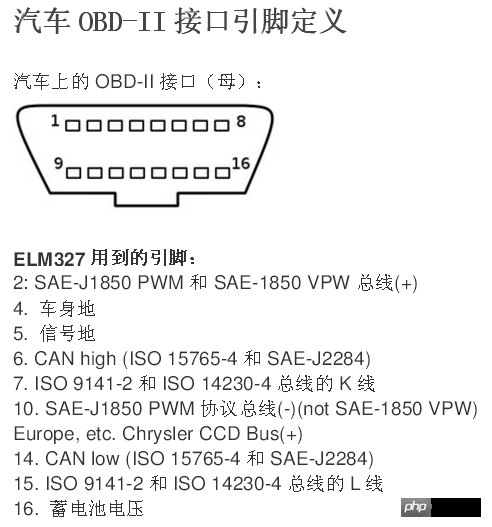OBD full name: On Board Diagnostics. In order to standardize the diagnosis of automobile emission and driveability-related faults, starting from 1996, all new cars sold in the United States must have similar diagnostic instruments, fault codes and maintenance procedures, that is, they must comply with the OBD II program regulations, so the OBD II system exceeds Becoming more and more widely used. The common functions of OBD include the following:
1. Detect component and system failures at any time to ensure that the vehicle’s emissions during its service life do not exceed the requirements of OBD regulations
2. When a related emission fault is detected, the OBD system can use the MIL light on the instrument panel to alarm.
3. Faulty vehicles can be repaired in time to reduce vehicle emissions.
4. The OBD system helps technicians quickly diagnose, perform symptomatic repairs, and reduce maintenance costs.
But what you need to pay attention to about the national standard OBD is: the realization of the three and four standards must be guaranteed by OBDⅡ, but OBDⅡ is not equal to these emission standards. There are two OBD standards: SAE's American version of OBD, ISO European version of EOBD . Countries implement OBD at different times. At the same time, there are different versions of OBD, and different versions have different functionality.
In addition to various power supplies and ground wires, the key ones are CAN wires, ISO 0141-2 K wires, J1850 bus, and there are many interfaces.
OBD full name: On Board Diagnostics. In order to standardize the diagnosis of automobile emission and driveability-related faults, starting from 1996, all new cars sold in the United States must have similar diagnostic instruments, fault codes and maintenance procedures, that is, they must comply with the OBD II program regulations, so the OBD II system exceeds Becoming more and more widely used.
The common functions of OBD include the following:
1. Detect component and system failures at any time to ensure that the vehicle’s emissions during its service life do not exceed the requirements of OBD regulations
2. When a related emission fault is detected, the OBD system can use the MIL light on the instrument panel to alarm.
3. Faulty vehicles can be repaired in time to reduce vehicle emissions.
4. The OBD system helps technicians quickly diagnose, perform symptomatic repairs, and reduce maintenance costs.
But what you need to pay attention to about the national standard OBD is: the realization of the three and four standards must be guaranteed by OBDⅡ, but OBDⅡ is not equal to these emission standards. There are two OBD standards: SAE's American version of OBD, ISO European version of EOBD . Countries implement OBD at different times. At the same time, there are different versions of OBD, and different versions have different functionality.
In addition to various power supplies and ground wires, the key ones are CAN wires, ISO 0141-2 K wires, J1850 bus, and there are many interfaces.
